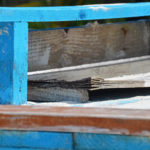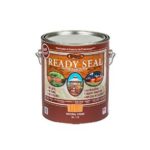Radiata pine lumber is softwood with an elegant grain and texture, making it the ideal material for light-duty furniture or decorative cabinets. However, as is common with other types of pinewoods, finishing touches like paint or stain can be challenging to apply evenly.
Follow these tips if you want to paint or stain Radiata pine yet preserve the wood’s natural appearance.
1. Pre-Treat the Surface of the Wood
After you’ve completed the prep work, you should always use a pre-stain conditioner or primer on the wood’s surface. This will aid in the uniform application of the paint and minimize blotchiness when painting softwoods.
When using pre-stain conditioners or primers, remember that they come with specific instructions from the manufacturer.
2. Use the Correct Type of Paint or Stain
When painting Radiata pine, always use oil-based paint for the best results. Water-based paints can raise the wood grain and cause other imperfections in the finish.
For staining, use a water-based stain if you want the grain of the wood to show through or an oil-based stain if you want a more consistent color.
3. Apply Paints and Stains Evenly
Once you have selected your paints or stains, it is important to apply them evenly across the surface of the wood. To do this, use a high-quality paintbrush or roller and avoid using too much pressure as you apply the product to the surface.
Once you have applied an even layer of paint or stain, allow it to dry completely before applying additional coats.
4. Don’t Rush The Process
One of the most important things to remember when painting or staining Radiata pine is to take your time and not rush through the process. Rushing will likely result in an uneven finish with areas that are either too light or too dark.
In addition, rushing can also cause bubbles or streaks in the paint or stain, so it is important to allow each coat plenty of time to dry before moving on to the next one.
5. Protect Your Work With A Topcoat Finish
After achieving the desired color with your paint or stain, it is important to protect your work with a topcoat finish. A topcoat helps seal in color and protects against scuffs, scratches, and other damage that can occur over time. When selecting a topcoat, choose one that is compatible with your paint or stain.
Applying a topcoat is relatively simple; just follow the manufacturer’s instructions.
Once you have applied your topcoat finish, allow it plenty of time to dry before using or placing items on top of your newly painted or stained surface.
6. Stablizie Any Loose Knots
Before sanding, fill any gaps with epoxy to keep loose knots from slipping. Keep it away from the surrounding wood surfaces to make cleaning easier. After the epoxy has cured, sand flushes with the surface. Clear epoxy allows the knot’s dark color to shine through.
If your epoxy turns milky-white after curing, touch it later when you’ve colored and sealed the wood.
7. For Best Results, Use Dark Paint Stain Colors
Use dark colors if you want the best results when painting or staining Radiata pine. Dark colors are forgiving and can help hide the wood’s surface imperfections.
8. Allow the Wood to Fully Dry After Painting or Staining
Once you have completed your painting or staining project, it is important to allow the wood plenty of time to dry. This can take anywhere from 24 to 48 hours, depending on your home or workspace conditions.
9. Don’t Forget About Touch-Ups
Even if you take your time and do everything right, there is always a chance that you will need to do some touch-ups after the fact. Touch-ups are especially common when using light colors, as they can show imperfections more easily.
Try to match the paint or stain used in the original application whenever possible. If you cannot find an exact match, select a color that is similar in tone.
Applying touch-ups is relatively simple; just follow the same steps you used for the original application.
Frequently Asked Questions
What Do You Put On Pine Wood Before Staining?
Applying a base coat before staining pine wood ensures even color and consistent coverage. Sanding sealers, dewaxed shellac, and wipe-on finishes can help create a smooth foundation for the stain. It is important to apply the base coat evenly and quickly, as pine wood is particularly absorbent.
Once the base coat has been applied, let it dry completely before moving on to staining. This will ensure that the stain goes smoothly and evenly, producing a professional-looking finish.
Does Pine Wood Take Stain Well?
Pine wood is popular for staining because it offers a clean, natural look. However, pine can be difficult to stain evenly because of its uneven grain pattern. The dense wood fibers create pockets that absorb stains differently, resulting in a blotchy surface.
For best results, using a pre-stain conditioner and applying the stain with a brush or rag, working in small sections is important. You can achieve a beautiful stained finish on pine wood with patience and attention to detail.
Why Does Pine Stain Blotchy?
Pine is a softwood, which means it is more prone to blotchy stains than hardwoods like oak. This is because the softer the wood, the more unevenly it absorbs stain. The absorbency of pine also varies depending on the age and growth conditions of the tree.
For example, younger pine trees grown in drier conditions tend to be more absorbent than older pine trees that have grown in wetter conditions. As a result, applying a stain to pine can often result in an uneven or blotchy finish. To avoid this, it is important to evenly apply the stain and allow it to dry completely before adding additional coats.
By taking these precautions, you can achieve a smooth, even finish on your next staining project.
Conclusion
Following these simple tips, you can achieve a beautiful and long-lasting finish on radiata pine lumber. Be sure to take your time during each step of the process, and don’t forget to protect your work with a topcoat finish once you’re done!



